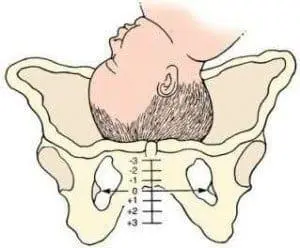While I don’t support inducing labor prior to 40 weeks gestation, and I don’t recommend a medical induction unless necessary, when I was past my due date by ultrasound prediction, date of known conception as my baby was planned, and date of last period with my third child, I decided to seek out safe, natural ways to induce labor that don’t just make you have to poop. No, for me, it’s logic and research, not castor oil and a close relationship with the toilet.
First, I polled other parents on Facebook and Reddit for methods to induce labor and combed the web for recommendations. Then, I took each option and sought any research in regards to their effectiveness. Below is a list of logically-sound or proven methods that offer safe, natural ways to induce labor at home or at least an increased chance at going into labor.
Natural ways to induce labor:
Foods
Menu choices were in no short supply in regards to natural ways to induce labor from spicy and shellfish to pineapple. However, for the most part there was no scientific support for food options to induce labor.
Fresh pineapple does contain an enzyme called bromelain. No research could be found to support the suggested cervix-ripening affects of pineapple, but bromelain has been shown in studies to reduce swelling and pain– something helpful after labor. So, it may not be among the natural ways to induce labor for certain, but it will help you heal after. It should be noted bromelian also acts as a blood thinner. Those with severe anemia may want to skip this one.
 |
| Castor Oil to induce labor is likely to just make you poop. |
Spicy foods and options such as the always suggested castor oil all work in a similar manner, they aggravate the bowel. An empty bowel does give your baby more space to move into your pelvis, and some research has suggested that bowel stimulation may also stimulate the uterus to contract, but no unchallenged evidence supports the use of laxative and bowel irritating foods to induce labor. It should be noted all of the above can also cause nausea and obviously diarrhea.
Nipple Stimulation:
Nipple massage or the use of a breast pump to induce labor are logically sound options among natural ways to induce labor and backed by research. Both result in the release of Oxytocin, which is actually naturally released by the body to stimulate contractions and ripen the cervix. However, research also suggests that nipple stimulation induced Oxytocin release may prove dangerous to your baby by negative affecting his/her heart rate. This is likewise a risk of medical induction via choices using artificial Oxytocin. As such, nipple stimulation may be a good alternative if you are already scheduled for a medical induction, but is less recommendable if you are just hoping to go into labor soon.
Sex:
Sex is another route that is logically supported for labor induction with minimal scientific research to support it. Intercourse and orgasm both can trigger contractions, and semen contains prostaglandins which ripen the cervix. Sex is an entirely safe option unless your water has broken or you are unsure if it has.
Exercise:
All forms of exercise from walking to cleaning will elevate heart rate and offer the advantage of gravity placing the baby’s weight on the cervix, both of which should indeed help labor begin. However, there is no current research to confirm any of the above work. There is, however, no risk to any of the above either as long as the activities are done in a safe manner.
Herbs:
Several herbs are suggested to have labor inducing effects including evening primrose oil, black and blue cohosh, black haw, and red raspberry leaves. Though no single option has been heavily researched, the following was found:
Raspberry leaf: While Evening Primrose is more commonly suggested, raspberry leaf is actually the only suggested herb found to have studies which confirm an ability to shorten the duration of pregnancy without posing a danger. In fact, one study suggested its use may reduce your risk of c-section and assisted delivery.
Evening Primrose did induce labor in some studies, but also increased the rate of labor complications such as the need for vacuum extraction.
No research could be found on the effectiveness or safety of other suggested herbs as natural ways to induce labor.
Acupuncture:
Studies are conflicting in regards to the effectiveness of acupuncture as a natural way to induce labor, though when properly performed acupuncture presents no risk.
To sum it up, for the most part, there is no strongly scientifically-supported safe and natural way to induce labor. Your baby will come out when he or she is ready. The top runners to try would be the herbal use of raspberry leaf tea, sexual intercourse, and exercise in whatever form you please as long as it is safe for pregnancy.
You may also find helpful:
What Do Contractions Feel Like?
Medical Labor Induction Options



